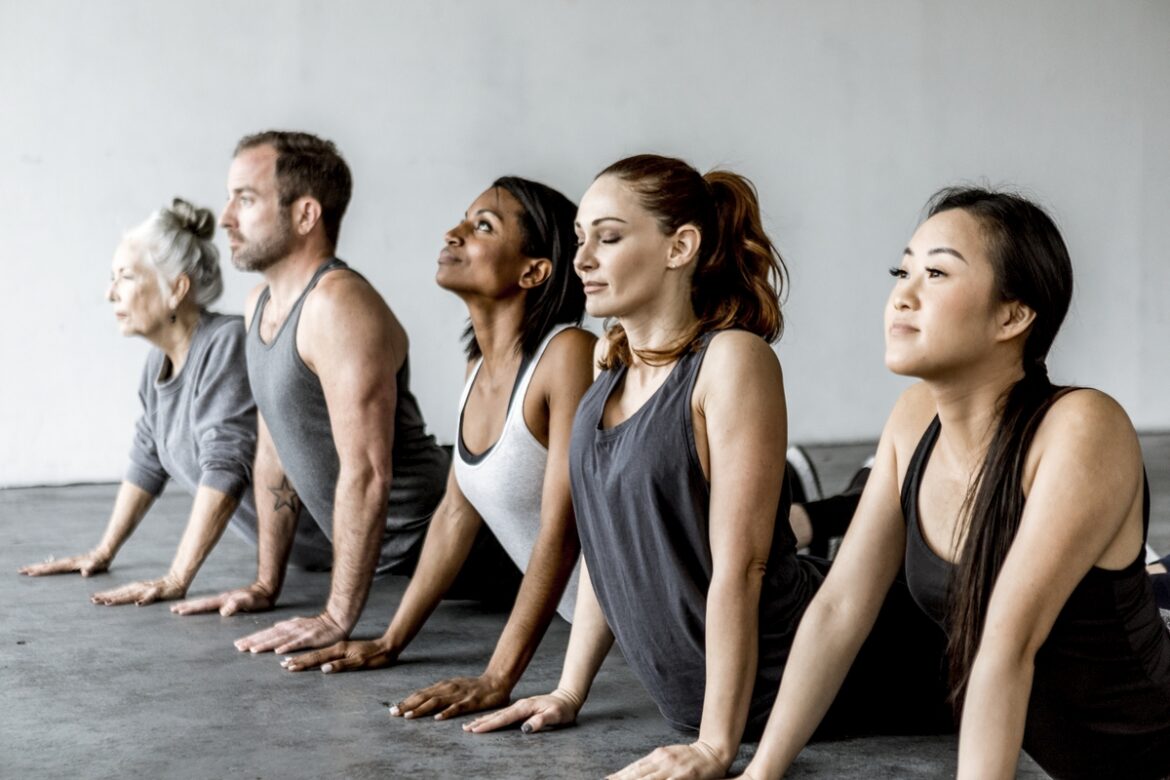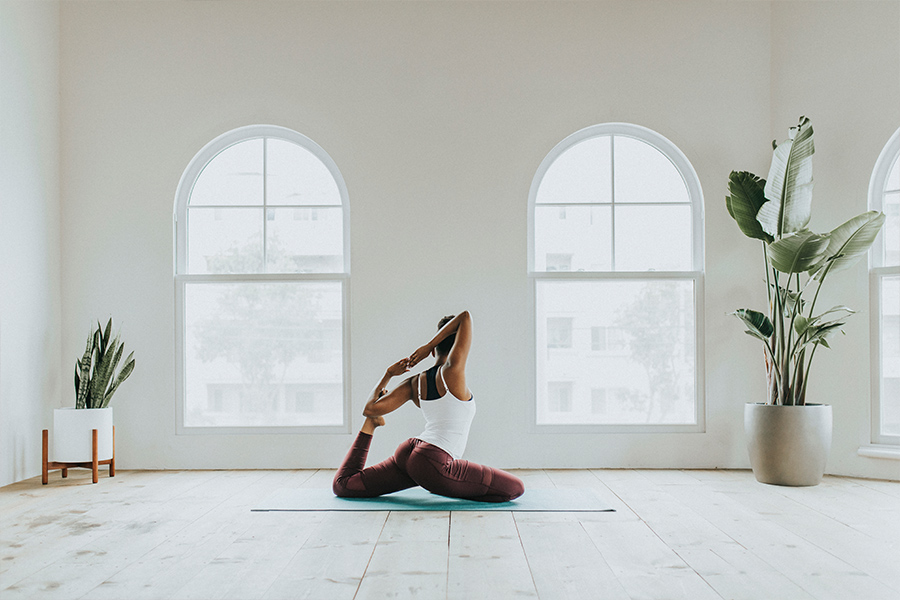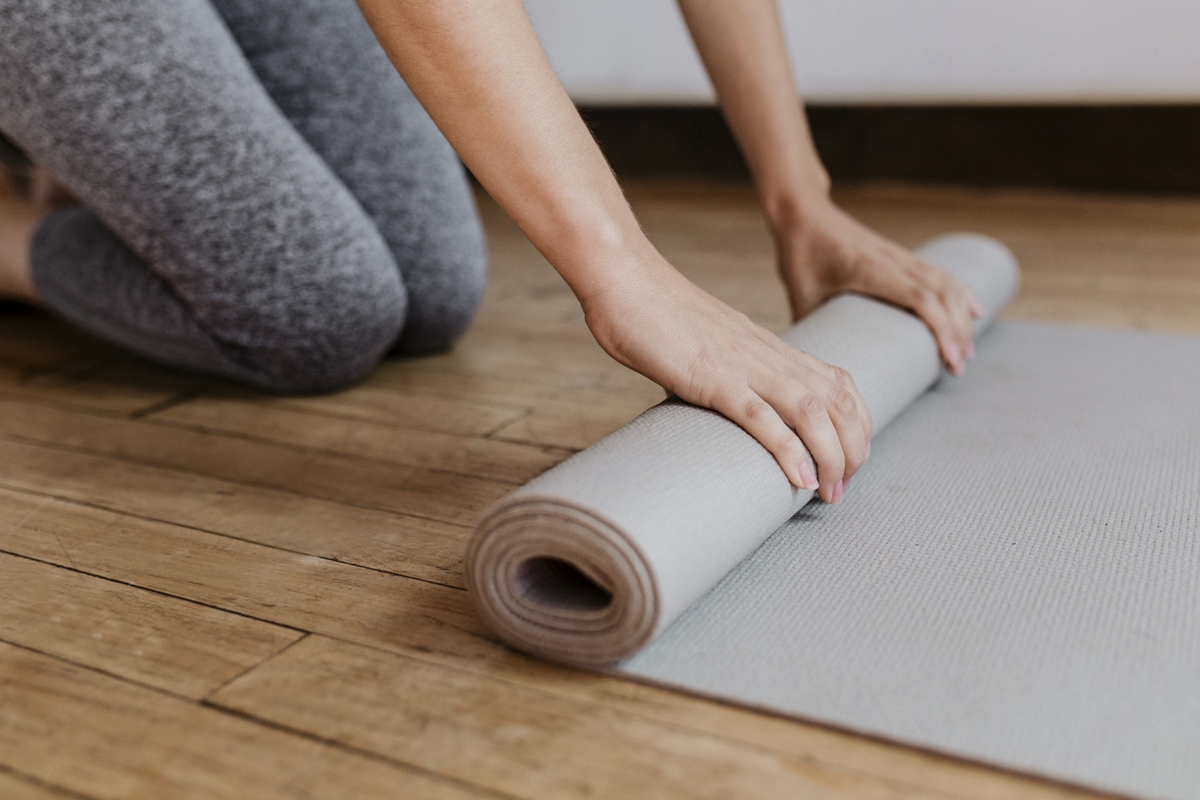
5 Yoga Poses for 40+ Warriors
The Fountain of Flexibility
Flexibility remains a fundamental aspect of physical fitness. As we get older the significance only increases. After I finished an article on the top 5 Yoga Poses for flexibility, I got to think. Are the same poses and stretches the same for those of us that accept we are over forty? The answer has a mixed response, but mostly no they are not the same. For individuals over forty, flexibility through yoga and other practices takes on added importance when it comes to performance, preventing injuries, and promoting overall well-being. It is the start and the finish that make a major difference. Whether you are an experienced yogi or just beginning your flexibility journey, understanding how to adapt your practice to suit your body’s changing needs is crucial.
In this article, we will explore five of the best yoga poses for flexibility, specifically tailored for those of us over forty. Not everything in life comes with instructions with it like babies or how to pick the best spouse. When those opportunities come around that give you the instructions it is like a level up. Yoga is no different. Often it is what happens before and after yoga that could help beyond the exercise itself. We are not talking about anything complicated here. The situation is simple. We will need to incorporate warm-up routines, address joint health, offering modifications, and stress mindfulness. Hopefully, this article will function as a guide that will empower you to maintain a flexible, vibrant, and injury-free body as you embrace the beauty of aging gracefully. Let us get right into this seven-step process for success.
Emphasize Warm-up and Cool-down:
As we age, our bodies may take a bit longer to warm up, and muscles might be more prone to stiffness. Begin your flexibility practice with a gentle warm-up, including dynamic movements and stretches to prepare the body for deeper poses. Loosening up the muscles and joints before diving into more intense stretches can help reduce the risk of strains and enhance overall flexibility.
Focus on Joint Health:
Joint health becomes increasingly important as we get older. This is particularly important for individuals over forty. Consider incorporating gentle joint rotations and movements to lubricate the joints and improve their range of motion. This can be especially beneficial for those with joint stiffness or conditions like arthritis.
Modify Intensity and Duration:
Listen to your body and adjust the intensity and duration of poses as needed. Avoid pushing too hard or forcing yourself into positions that feel uncomfortable. Just remember you need to get up and go to work in the morning. Gradually ease into poses and respect your body’s limits, allowing for a slower-paced practice that emphasizes quality over quantity.

Address Common Age-Related Concerns:
Flexibility training can be a powerful tool to address age-related concerns. Promote how regular practice can support better posture, reduce the risk of falls, and alleviate discomfort associated with aging. By emphasizing these benefits, individuals over forty can recognize the positive impact of flexibility in their daily lives.
Include Props and Support:
Using props like blocks, straps, or bolsters can provide valuable support during your practice. These props assist in maintaining proper alignment and allow you to access the benefits of poses that might otherwise feel challenging. Props are especially helpful for older individuals with limited flexibility or specific concerns.
Stress Mindfulness and Patience:
Mindfulness is a cornerstone of yoga, and it becomes even more valuable as we age. Stay present during your practice, focusing on the sensations in your body and honoring its needs. Avoid comparing yourself to others and practice patience as you progress on your flexibility journey. Celebrate every achievement, no matter how small, and cultivate self-compassion throughout your practice.
Offer Alternatives and Variations:
Recognize that everyone’s body is unique and that certain poses may need modification for individuals over forty. Provide alternative poses or variations that accommodate specific limitations or concerns. For instance, individuals with lower back issues might benefit from gentle modifications in backbends.
Now that you understand how to evaluate your body and predict what is coming, I can provide the yoga poses for your enjoyment or whatever you may want to call it. The five below complete with instructions on how to perform the pose.

Gentle Neck Stretches:
Neck stretches help relieve tension and stiffness in the neck and shoulders, which are common issues for many individuals over forty. Sit comfortably with a tall spine, and slowly tilt your head to one side, bringing your ear towards your shoulder. Hold the stretch for a few breaths, feeling the gentle stretch along the side of your neck. Repeat on the other side. You can also add gentle neck rotations, moving your head in a circular motion, to further loosen the neck muscles.
Sit on a chair or cross-legged on the floor, with your spine tall and shoulders relaxed.
Inhale deeply, and as you exhale, gently tilt your head to the right, bringing your right ear towards your right shoulder.
Keep your left shoulder relaxed and avoid lifting it towards your ear.
Hold the stretch for 3-5 breaths, feeling a soft stretch along the left side of your neck.
Inhale to the center, then exhale to tilt your head to the left, bringing your left ear towards your left shoulder.
Again, hold for 3-5 breaths, feeling the gentle stretch along the right side of your neck.
Repeat this sequence 2-3 times on each side.
Cat-Cow Stretch:
This dynamic yoga flow promotes flexibility in the spine while gently engaging the core and improving posture. Start in a tabletop position with hands under shoulders and knees under hips. Inhale, arch your back, lift your head and tailbone (Cow Pose). Exhale, round your back, tuck your chin to your chest (Cat Pose). Flow smoothly between these two poses, synchronizing movement with breath, for about 5-8 rounds.
Start in a tabletop position on your hands and knees, with your wrists aligned under your shoulders and knees under your hips.
Inhale, arch your back, and lift your head and tailbone towards the ceiling (Cow Pose).
Lift your gaze slightly and open your chest, drawing your shoulder blades together.
Exhale, round your back, tuck your chin to your chest, and draw your belly button towards your spine (Cat Pose).
Softly push the floor away, creating space between your shoulder blades.
Flow between Cat and Cow Poses, inhaling as you arch and exhaling as you round, for about 5-8 rounds.
Coordinate your breath with the movement, making it a fluid and meditative flow.
Supported Bridge Pose:
Bridge Pose gently opens the chest, stretches the hip flexors, and strengthens the back and glutes. Lie on your back with knees bent and feet hip-width apart. Place a block or cushion under your sacrum, just above your tailbone. Press down into your feet and lift your hips, resting the weight on the prop. Hold the pose for 5-8 breaths, feeling a gentle stretch in your hips and chest.
Lie on your back with your knees bent and feet hip-width apart, flat on the floor.
Place a yoga block or a firm cushion under your sacrum (the bony part just above your tailbone).
Press down onto your feet and engage your glutes and core.
Lift your hips off the floor, allowing the support to hold your pelvis in a comfortable position.
Adjust the height of the block or cushion to suit your comfort level. The idea is to feel a soft stretch in your hip flexors and chest without straining.
Hold the pose for 5-8 breaths, maintaining steady breathing, and release the pose by gently lowering your hips back to the floor.

Seated Forward Bend with Support:
The Seated Forward Bend offers a deep stretch for the hamstrings and lower back. Sit with your legs extended straight in front of you. Place a rolled-up blanket or cushion under your knees to support the hamstrings. Inhale, lengthen your spine, and exhale as you fold forward from the hips. Reach for your shins, ankles, or feet, depending on your flexibility. Hold the pose for 5-8 breaths, focusing on elongating the spine with each exhale.
Sit with your legs extended straight in front of you.
Place a rolled-up blanket or cushion under your knees for support, particularly if you feel tightness in your hamstrings.
Inhale deeply, lengthen your spine, and exhale as you hinge at your hips to fold forward.
Reach for your shins, ankles, or feet, depending on your flexibility.
Avoid rounding your back excessively; instead, prioritize maintaining a straight spine throughout the pose.
Hold the stretch for 5-8 breaths, gradually deepening the fold with each exhale.
Inhale as you slowly rise back up to a seated position, maintaining the length in your spine.
Supine Spinal Twist:
The Supine Spinal Twist helps release tension in the spine, shoulders, and hips. Lie on your back with arms out to the sides, forming a “T” shape. Bend your knees and drop them to one side, keeping your shoulders grounded. Gently turn your head to the opposite side. Hold the twist for 5-8 breaths, then switch to the other side. This pose promotes flexibility in the spine and encourages relaxation.
Lie on your back with your arms out to the sides, forming a “T” shape.
Bend your knees and bring them towards your chest.
Exhale and drop your knees to the right side of your body, aiming to stack them on top of each other.
Keep both shoulders grounded on the floor and gently turn your head to the left, gazing towards your left hand.
Relax into the twist, feeling a gentle stretch along the spine, shoulders, and hips.
Hold the twist for 5-8 breaths, deepening the stretch with each exhale.
Inhale as you return your knees to the center, and then exhale as you drop them to the left side.
Turn your head to the right, gazing towards your right hand, and hold the twist on this side for another 5-8 breaths.
Totally understand these are not the craziest of yoga poses, but they could be the most important ones for you forty and then some. Flexibility is a precious asset. Supporting physical function, independence, and overall well-being should be priority number one. By customizing your flexibility practice with warm-up routines, joint health focus, and mindful adjustments, you can embrace your body while maintaining a flexible, vibrant, and injury-free body. Incorporate these age-appropriate modifications, stress mindfulness, and celebrate the progress you make along the way. Embrace the power of flexibility and it will seem as if you gained back ten years. Once you master the above, get ready to level up. The next tier of yogis will be waiting.
